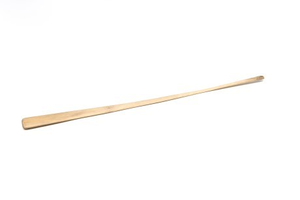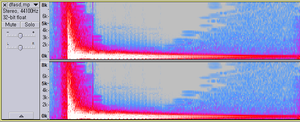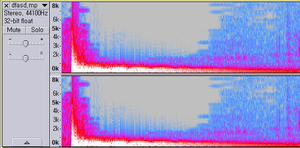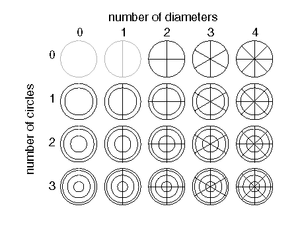Course:PHYS341/Archive/2016wTerm2/Janggu
Acoustics of Janggu
A janggu (or janggo) is a Korean percussion instrument made by attaching two animal skins to both sides of an hourglass-shaped body. It is also called the seyogo for its shape; the word seyogo translating directly to 'slim waist drum'. Each head of the janggu produces tone of different pitch, and is played with two different sticks to further emphasize the difference. It is one of the most widely used instrument in the Korean traditional music.
Structure of a Janggu



Janggu is created by attaching two leather heads to the hourglass-shaped wood body and connecting it with numerous strings. There are three main parts of the body of janggu: the wood soundbox, the two leather heads, and joimjul, which are the strings that connect the two heads together. [1]
There is a round tube at the middle of the soundbox called the jorongmok. The jorongmok is an important device that helps to hold the resonating sound in the soundbox. It is essential for the instrument to produce quality sound.
Each side of the head is named differently and produces sound of different pitch and timbre. Two heads are often distinguished by the joigae (located on the joimjul). If the head is closer to the larger face of the joigae it is the chae side. Or, if the head is closer to the smaller face of the joigae it is the book side. Chae side is longer and narrower than the book side, although some modern janggu does not differentiate the size of the two. The head of the chae side is covered by thin horsehide or calfhide to produce light and high tones. Book side is shorter and wider than the chae side, and the head is covered by calfhide or thicker horsehide to produce low and deep tones. Two beating sticks are used when playing the janggu: yeolchae and gungchae (or gunggulchae). Yeolchae is a thinly carved bamboo used to hit the chae side. Gungchae is shaped like a mallet with a round head and is used to play the book side. The book side is also struck with bare hand, depending on the type of traditional music that is being played.
Tension of the heads are controlled by the joigae on the joimjul. Pushing the joigae to the chae side tightens the joimjul and increases the tension of the heads. Pushing the joigae to book side loosens the joigae and decreases the tension of the heads.
How Janggu works


Janggu is a type of a membranophone or a membrane drum.
There are three categories that the vibrating system can be specified into [2]: those with a single membrane coupled with enclosed air cavity (e.g. kettledrums); those with single membrane which are open to air on both sides (e.g. tom-toms); and those consisting of two membranes that are coupled by enclosed air cavity (e.g. bass drums). Out of these three categories, janggu is catagoried as the last: those consisting of two membranes, coupled by enclosed air cavity.
As a membranophone, the sound of Janggu is created by directly striking the membrane with the beating stick or with hand. Once struck the membrane is excited and begins to vibrate in up and down motion. The lowest frequency of the vibration is generated when the membrane is struck in the center, and the membrane moves up and down as a whole.[3]
As a membrane larger than the soundbox is attached to the head of janggu, its head is much larger than its soundbox. This results in division of the membrane into two. The membrane within the width of the soundbox is called the bok pan, and the membrane outside the width of the soundbox is called the byeon juk. Bok pan resonate a large, low frequency sound whilst the byeon juk resonate a high, light frequency sound.[4]
Figures 1 and 2 compare the sound created by striking two sides with each "chae". Figure 1 shows a spectrum view of the byeon juk when struck with the yeol chae (also called the Dda sound in Korean music). Figure 2 shows a spectrum view of the bok pan when struck with the "gung chae" (also called the dung sound in Korean music). The graph clearly indicates the frequency difference of the two sounds. Strike in the byeon juk side creates sound much higher in frequency then the sound created by strike in the bok pan.
Circular membrane vibration

Sound of a typical drum is produced and varied by striking the membrane at different distances from its center. Different distances create different nodal patterns in the membrane, varying the frequency and creating diverse sound.[5] For instance, the lowest frequency (or the fundamental) is created when all parts of the head are vibrating in phase. The frequency then increases once a nodal line is added across a diagonal, or a nodal ring is added. Combinations of these nodal patterns lead to different sound patterns of a vibrating circular membrane.
However, the janggu player does not focus their attention too much on varying the node of the strike. As the instrument already allows the player to create two different tones, the player would focus their attention centrally on the harmony and variance of the sounds created on each side. Different sounds are created by striking each side with different chae or by varying the strength of a strike. If further diverse sound pattern is required for the music, the player uses the different sounds of the byeon juk and bok pan. At first learning the instrument, the janggu player is adviced to strike the bok pan at the same place each time. Hence the node of the typical strike of the janggu would consist of a single nodal ring.
References
- ↑ Shin, H. (2010, June). Janggu. Retrieved from http://www.culturecontent.com/content/contentView.do?content_id=cp022500370001
- ↑ Fletcher, N. H., Rossing, T. D., & SpringerLINK eBooks - English/International Collection (Archive). (1993;1991;). The physics of musical instruments (1st ed.). Pg 497. New York: Springer-Verlag.
- ↑ White, H. E., & White, D. H. (1980). Physics and music: The science of musical sound. Pg. 276~277. Philadelphia: Saunders College Pub.
- ↑ Misc. author. (2014, January). Retrieved from: http://terms.naver.com/entry.nhn?docId=2082563&cid=50828&categoryId=50828
- ↑ White, H. E., & White, D. H. (1980). Physics and music: The science of musical sound. Pg. 164~165. Philadelphia: Saunders College Pub.